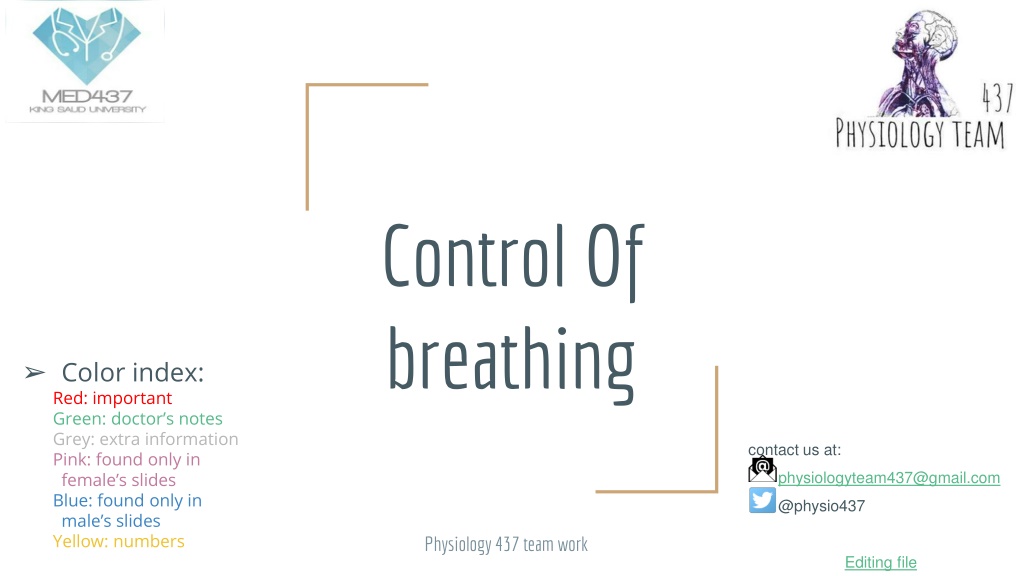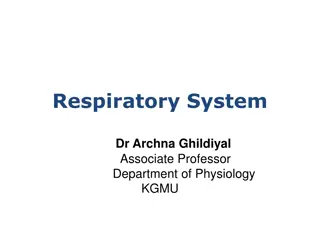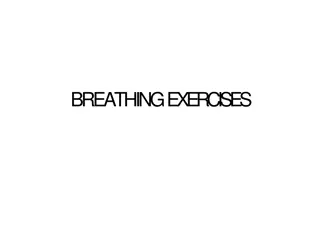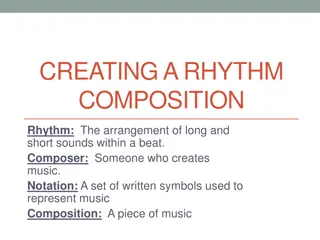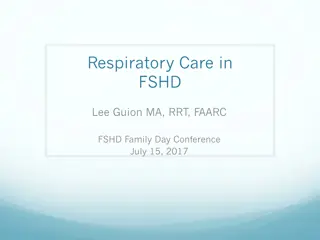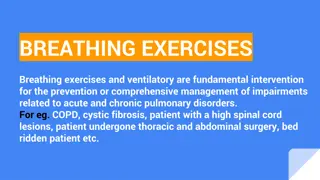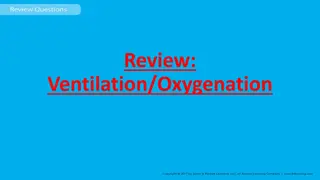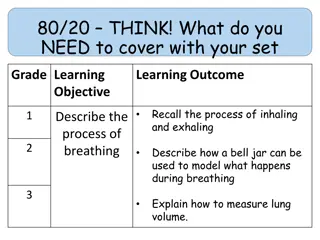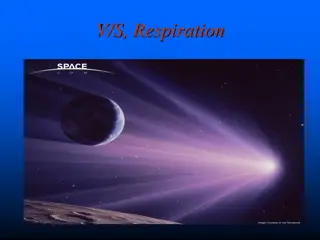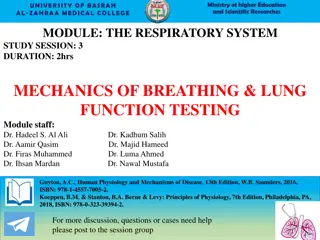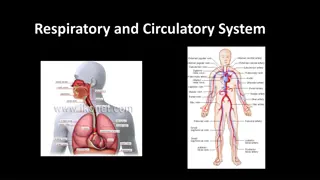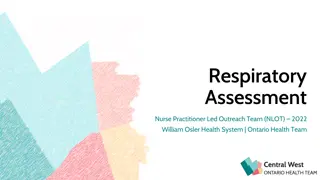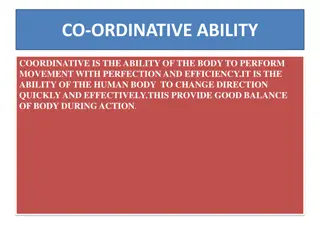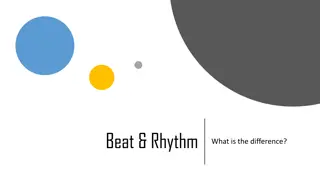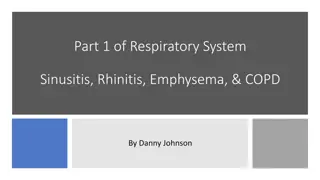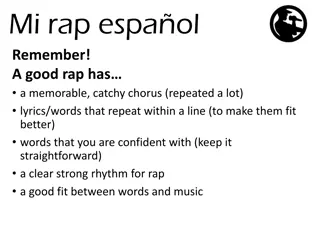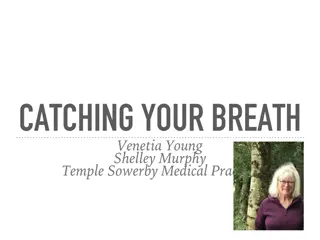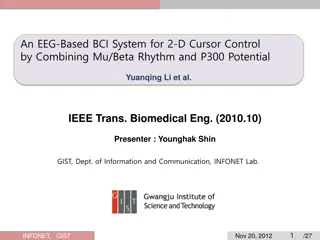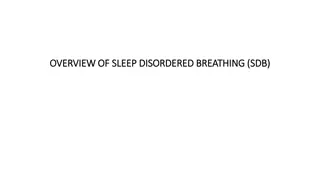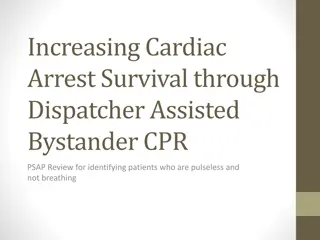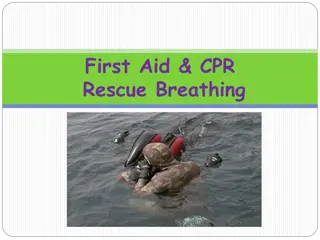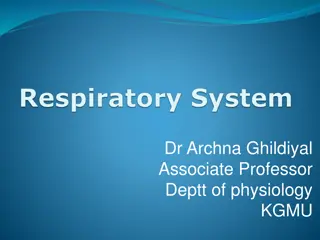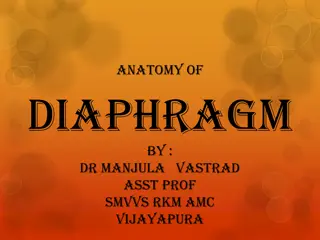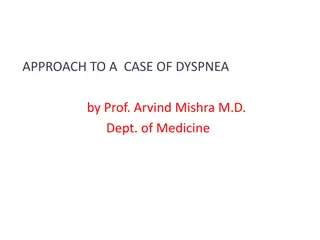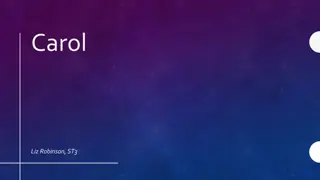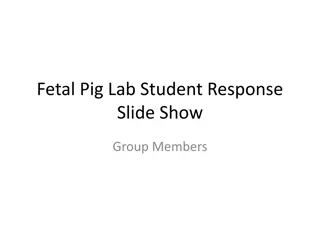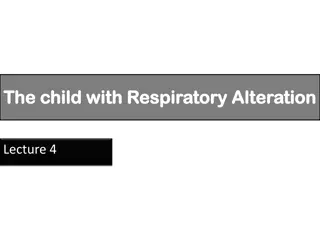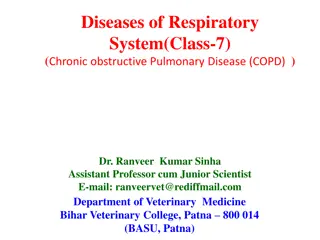Understanding the Control of Breathing and Respiratory Rhythm
The content delves into the intricacies of the control of breathing, emphasizing the role of the medulla oblongata in regulating respiratory activity. It explores factors modifying breathing patterns, respiratory consequences of changing PO2, PCO2, and pH, and the functions of central and peripheral chemoreceptors. Additionally, it discusses the medullary respiratory centers responsible for maintaining respiratory rhythm.
Download Presentation

Please find below an Image/Link to download the presentation.
The content on the website is provided AS IS for your information and personal use only. It may not be sold, licensed, or shared on other websites without obtaining consent from the author. Download presentation by click this link. If you encounter any issues during the download, it is possible that the publisher has removed the file from their server.
E N D
Presentation Transcript
Control Of breathing Color index: Red: important Green: doctor s notes Grey: extra information Pink: found only in female s slides Blue: found only in male s slides Yellow: numbers contact us at: physiologyteam437@gmail.com @physio437 Physiology 437 team work Editing file
objectives: By the end of the lecture you will be able to: Understand the role of the medulla oblongata in determining the basic pattern of respiratory activity. List some factors that can modify the basic breathing pattern e.g. a. The Hering-Breuer reflexes b. The proprioceptor reflexes c. The protective reflexes, like the irritant, and the J-receptors. Understand the respiratory consequences of changing PO2 , PCO2 , and PH. Describe the locations and roles of the peripheral and central chemoreceptors. Compare and contrast metabolic and respiratory acidosis and metabolic and respiratory alkalosis
Controls of rate and depth of respiration Depth of breathing two types : normal superficial and deep Rate: Normal 8-12 breaths per min Arterial PO2 (oxygen pressure) Normal arterial PO2=100 When PO2 is VERY low (Hypoxia), ventilation increases. Less sensitive , major changes in PO2 will cause increase ventilation Arterial PCO2 ( Carbon dioxide pressure) Normal arterial PCO2=40 The most important regulator of ventilation is PCO2, small increases in PCO2, greatly increases ventilation. changes in PCO2 , ventilation will greatly increase most sensitive , any minor Arterial pH Normal pH=7.4 As hydrogen ions increase (acidosis)( ), alveolar ventilation increases.
Controlling of Respiratory Rhythm is done or maintained by Medulla Oblongata which contains VRG, DRG, Pneumotaxic center and apneustic center. " . "
Medullary Respiratory centers Inspiratory area (Dorsal Respiratory Group) DRG -Determines basic rhythm of breathing. Damage of this area lead to breathing arrhythmia -Causes contraction of diaphragm and external intercostals. inspiration Expiratory area (Ventral Respiratory Group) VRG -Although it contains both inspiratory and expiratory neurons. It is inactive during normal quiet breathing. As you know normal expiration is a passive process no need for muscles -Activated by inspiratory area during forceful breathing. -Causes contraction of the internal intercostals and abdominal muscles. The medullary respiratory center stimulates basic inspiration for about 2 seconds and then basic expiration for about 3 seconds (5breaths/sec = 12breaths/min). Inspiration last for 2 seconds which is shorter than expiratory that last for 3 seconds !!! why? Because inspiration is an active process that involves muscles while expiration is an inactive process depend upon lung recoiling and inspiratory muscles relaxation. The first system that controls respiration is CNS The respiratory center is composed of several groups of neurons located bilaterally in the medulla oblongata and pons of the brainstem, It is divided into three major collections of neurons: (1) a dorsal respiratory group, located in the dorsal portion of the medulla, which mainly causes inspiration; (2) a ventral respiratory group, located in the ventrolateral part of the medulla, which mainly causes expiration; and (3)The pneumotaxic center, located dorsally in the superior portion of the pons,which mainly controls rate and depth of breathing.
Pontine Respiratory centers A Pneumotaxic Center Limits the Duration of Inspiration and Increases the Respiratory Rate A pneumotaxic center, located dorsally in the nucleus parabrachialis of the upper pons, transmits signals to the inspiratory area. The primary effect of this center is to control the switch-off point of the inspiratory ramp, thus controlling the duration of the filling phase of the lung cycle. When the pneumotaxic signal is strong, inspiration might last for as little as 0.5 second,thus filling the lungs only slightly; when the pneumotaxic signal is weak, inspiration might continue for 5 or more seconds, thus filling the lungs with a great excess of air.The function of the pneumotaxic center is primarily to limit inspiration.This has a secondary effect of increasing the rate of breathing because limitation of inspiration also shortens expiration and the entire period of each respiration. A strong pneumotaxic signal can increase the rate of breathing to 30 to 40 breaths per minute, whereas a weak pneumotaxic signal may reduce the rate to only 3 to 5 breaths per minute. The apneustic center of pons sends signals to the dorsal respiratory center in the medulla to delay the 'switch off' signal of the inspiratory ramp provided by the pneumotaxic center of pons. It controls the intensity of breathing. The apneustic center is inhibited by pulmonary stretch receptors Transition between inhalation and exhalation is controlled by: These two areas contribute in switching off of inhalation or exhalation to prevent continuous inhalation or exhalation 1- Pneumotaxic area Inhibits inspiratory area of medulla to stop inhalation. Therefore, breathing is more rapid when pneumotaxic area is active. 2- Apneustic area Stimulates inspiratory area of medulla to prolong inhalation. Therefore slow respiration and prolonged respiratory cycles will result if it is stimulated.
Special thanks to team 436 As we said , there are some chemical substances that regulate respiration such as Oxygen and Carbon dioxide. Receptors detect changes in a substance level so,it will send signals to CNS to influence and overcome the condition.
Chemoreceptor Control of Breathing 2nd 1st If the person has acidosis due to metabolic problem only the 2nd pathway will be stimulated, but if he has a problem which leads to an increase in Pco2 the two pathways will be stimulated, so it will have a bigger impact than if the problem were only in the pH.
Some references call it stretch reflex Hering-Breuer inflation reflex When the lung becomes overstretched (tidal volume is 1 L or more), stretch receptors located in the wall bronchi and bronchioles transmit signals through vagus nerve to DRG producing effect similar to pneumotaxic center stimulation. , Lung Inflation Signals Limit Inspiration The Hering- BreuerInflation Reflex In addition to the central nervous system respiratory control mechanisms operating entirely within the brain stem, sensory nerve signals from the lungs also help control respiration. Most important, located in the muscular portions of the walls of the bronchi and bronchioles throughout the lungs are stretch receptors that transmit signals through the vagi into the dorsal respiratory group of neurons when the lungs become overstretched. These signals affect inspiration in much the same way as signals from the pneumotaxic center; that is, when the lungs become overly inflated, the stretch receptors activate an appropriate feedback response that switches off the inspiratory ramp and thus stops further inspiration. This is called the Hering- Breuer inflation reflex. This reflex also increases the rate of respiration, as is true for signals from the pneumotaxic center. In humans, the Hering-Breuer reflex probably is not activated until the tidal volume increases to more than three times normal (> 1.5 liters per breath). Therefore, this reflex appears to be mainly a protective mechanism for preventing excess lung inflation rather than an important ingredient in normal control of ventilation. Switches off inspiratory signals and thus stops further inspiration . This reflex also increases the rate of respiration as does the pneumotaxic center.
These are receptors found mainly in the epithelium of conduction zone of respiratory system known as irritant receptors that detect any foreign body that enters ,so it will stimulate cough or sneezing reflex to get rid of the foreign body. These are factors that can exert effect on respiration Lung J receptors are found in the wall of alveoli that is in contact with pulmonary capillaries. In case of pulmonary edema, these receptors will get activated and try to increase rate of respiration to compensate since edema will narrow the gases exchange area.
Factors Influencing Respiration Summary of the factors the influence respiration
Respiratory Acidosis Respiratory Alkalosis In level of gases -Hyperventilation. washing out CO2 -Hypoventilation. -Excessive loss of CO2. -Accumulation of CO2 in the tissues . PCO2decreases ( 35 mmHg). pH increases. PO2 increase. PCO2increases pH decreases. PO2 decreases. Gases change acidity or basicity of the blood
Metabolic Acidosis Metabolic Alkalosis In level of cells Ingestion, production of a fixed acid. decreased renal excretion of hydrogen ions. H+ loss of bicarbonate or other bases from the extracellular compartment. HCO3- pH decrease more acidic infusion, or Excessive loss of fixed acids from the body. Ingestion, infusion, excessive renal reabsorption of bases such as bicarbonate HCO3- pH increases. more basic or Products of the cell change acidity or basicity of the blood The respiratory system can compensate for metabolic acidosis or alkalosis by altering alveolar ventilation. Hypoventilation Hyperventilation
Females team: Leader: Alanoud Salman Alotaiby Members: Sarah Alflaij Male s team: Leader: Abdulhakim AlOnaiq Members: Naif Almutairi Abdullah Alzaid Saad alfawzan
